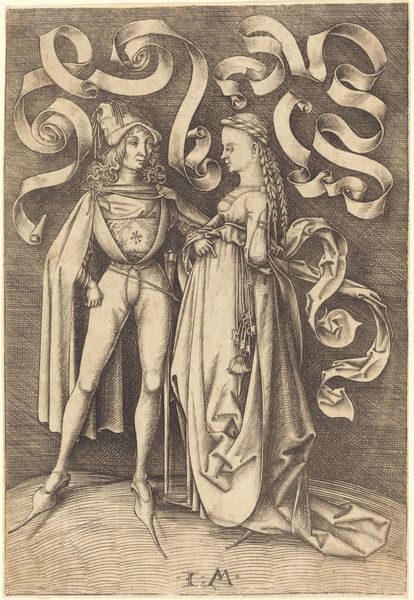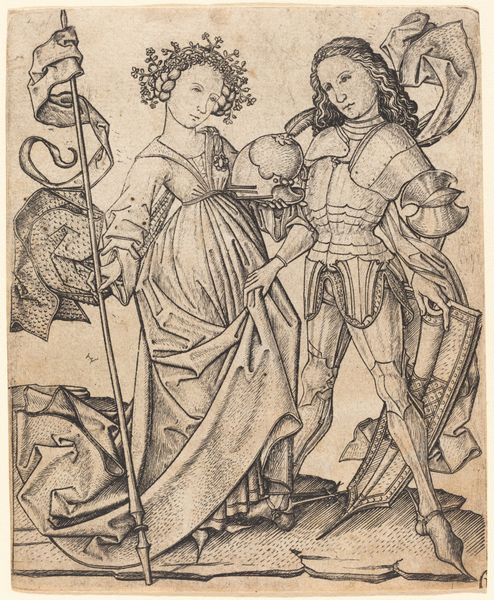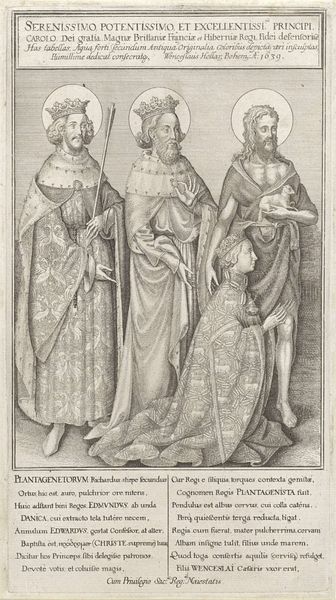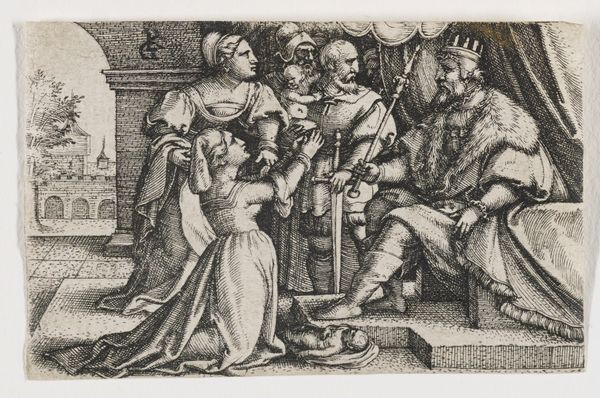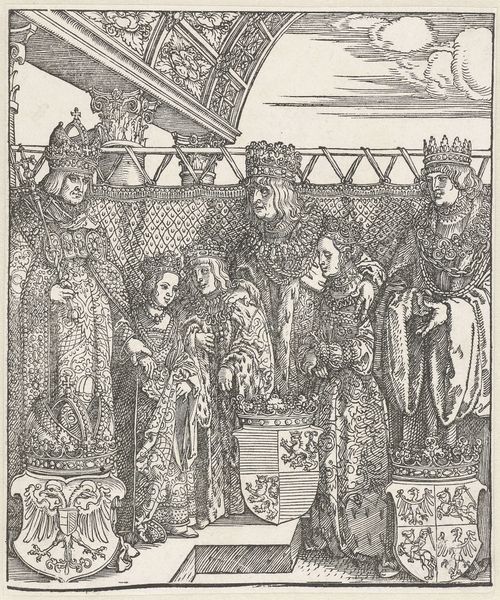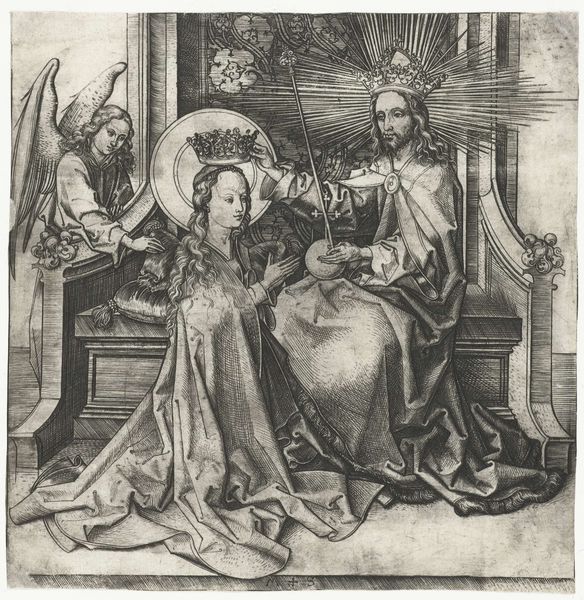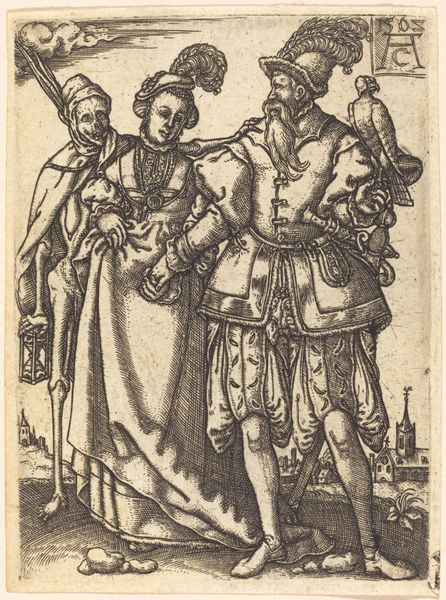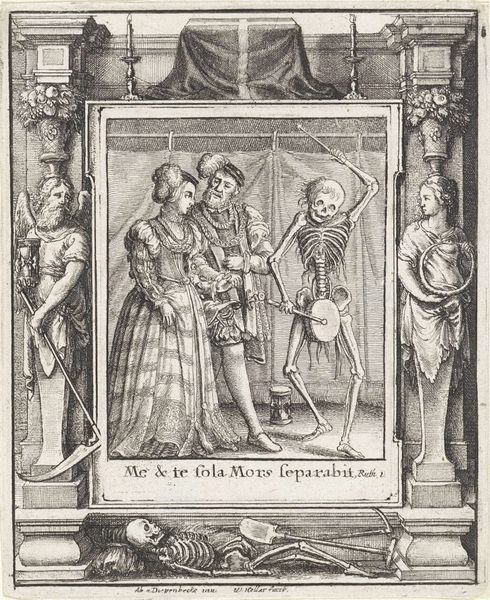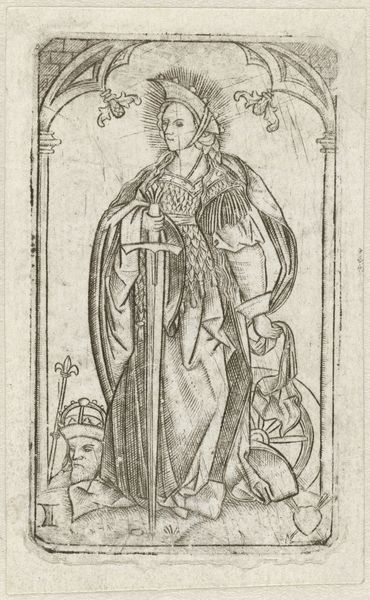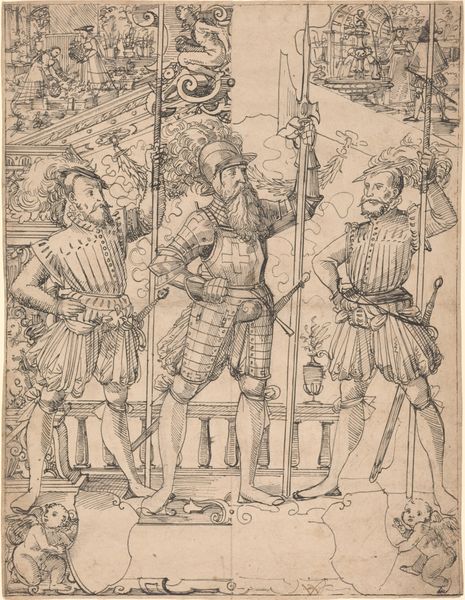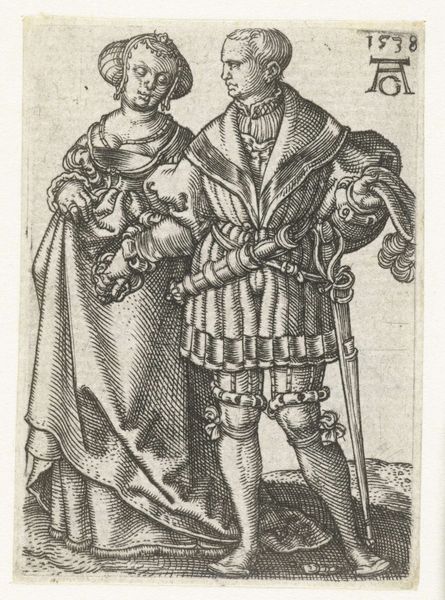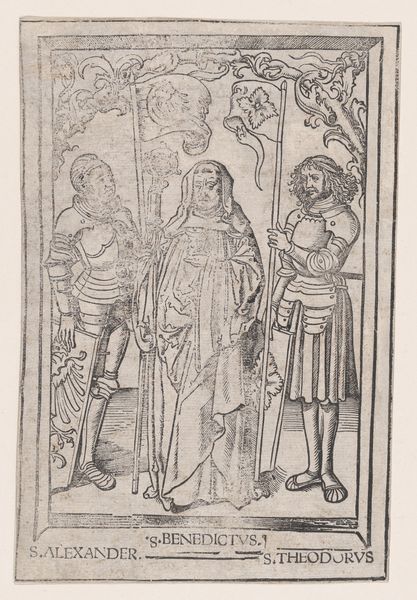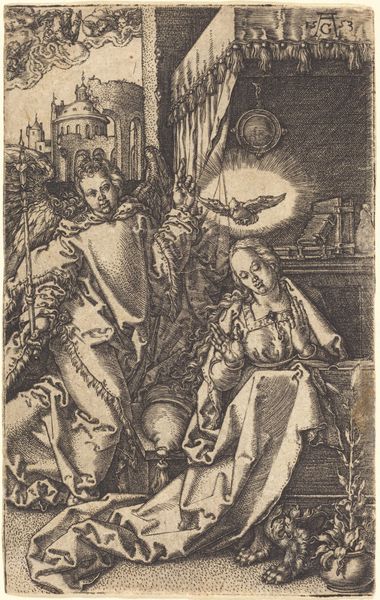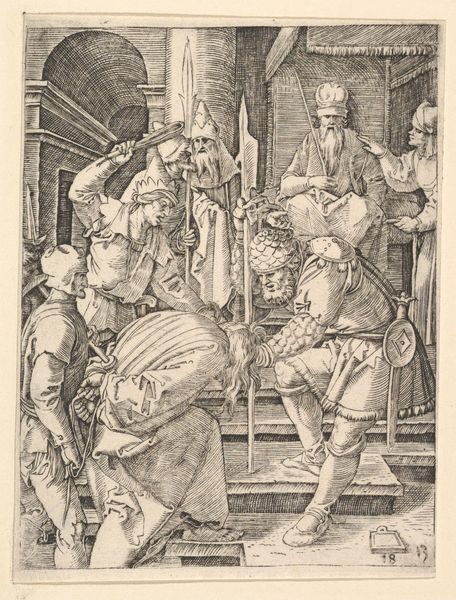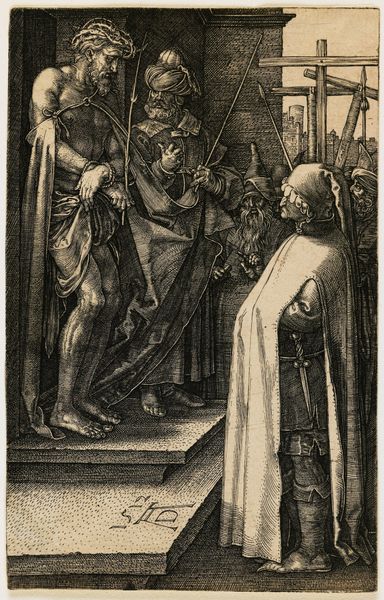
painting, oil-paint
#
portrait
#
medieval
#
painting
#
oil-paint
#
figuration
#
oil painting
#
history-painting
#
international-gothic
Copyright: Public domain
Editor: This oil painting by Stefan Lochner, created around 1445, is called *Sts. Catherine, Hubert and Quirinus.* The figures have such elongated forms! The light feels symbolic too, almost radiating off the Saints' faces. What historical factors might have influenced this stylization and the depiction of sanctity? Curator: It's interesting you pick up on the elongation. Let’s consider this piece as part of a larger trend. Lochner worked in Cologne during the 15th century, and Cologne was a significant artistic center. Can you think of ways the patronage system influenced art during the medieval period? Editor: I would assume it was heavily shaped by the church… I guess this composition with three saints reinforces established hierarchies with their holy power. Also, I hadn’t even noticed the kneeling figure at first; he seems much smaller and is placed lower down than the saints. Was he likely the donor? Curator: Precisely! He would have paid a considerable sum for this altarpiece. Think about the role images of saints played in shaping religious experience. Saint Catherine, Hubert, and Quirinus, for instance, were protectors of specific social groups and places. Images like these fostered a sense of communal identity. What strikes you about that function for art? Editor: That art could cement communal identity is intriguing. Considering this as something publicly displayed, beyond just its spiritual aspect, opens a new perspective on the intention behind these works. Curator: Absolutely. The International Gothic style itself, which Lochner employed, served a social purpose. Its elegance and refined detail were attractive to the wealthy elites and powerful clergy. The political structures created opportunities and limitations for artwork and dictated content, didn't they? Editor: I hadn't considered the "fashionable" element before, almost as a status symbol. This reframes my initial perception; it’s much more complex than just a religious devotional image. Curator: Indeed! Examining its place within broader socio-political currents illuminates its purpose, revealing how it both reflected and reinforced the power dynamics of its time.
Comments
No comments
Be the first to comment and join the conversation on the ultimate creative platform.
